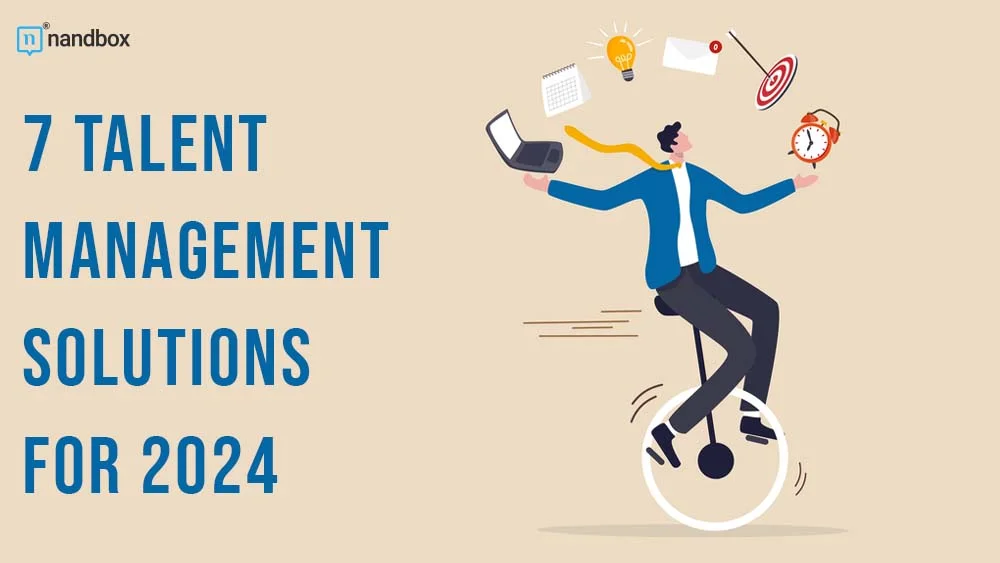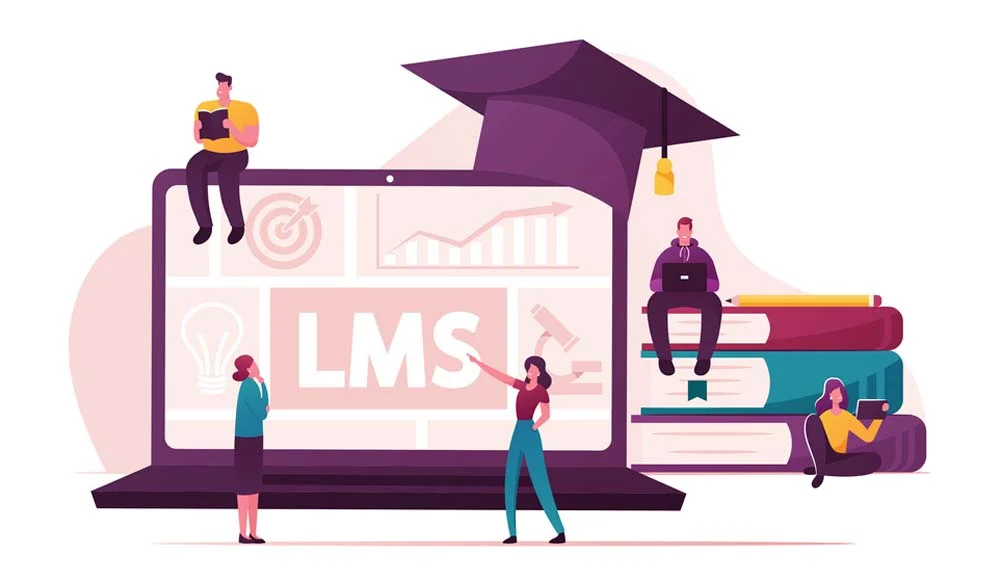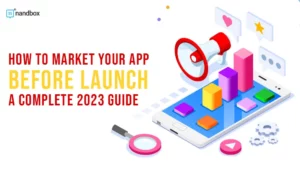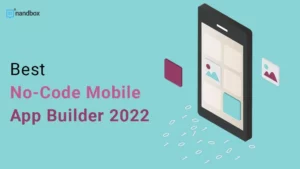7 Total Talent Management Solutions Should Use in 2024
Effective talent management strategies should be a priority for all companies looking to improve their productivity and reach business goals. They are also crucial to enhancing engagement levels in your company, as they support a positive employee experience throughout all the steps related to human resource management. However, implementing these strategies requires considerable time and energy, and HR departments are often already overwhelmed with day-to-day employee requests and administrative tasks. That is where total talent management solutions come into play: these tools are made to automate administrative processes while supporting HR strategic action plans. Without further ado, here are all the types of talent management tools you need to know and implement in your organization.
-
Applicant Tracking System (ATS): To Streamline Recruitment Processes and Improve Candidate Experience
![]()
A positive employee experience starts with a good recruitment journey that sets up effective communication, transparent interviews and streamlined processes.
That is exactly what Applicant Tracking Systems aim to do : on top of automating administrative tasks related to the hiring process, they reduce the risks of bias and centralize your candidate database to ensure that you never miss out again on the best talent in your pool.
Here are some features you need to look out for when choosing an ATS for your company:
- Centralized candidate database to choose from a wide talent pool;
- Keyword search to find specific qualifications, skills or selection criteria;
- Candidate profiles to find all the information you need on a potential new hire in a few clicks;
- Automated candidate communication for effective and transparent discussions between recruiters and talents;
- Integration with well-known job sites to publish your job offer on different platforms;
- Integration with your career page if you have one;
- Customization capabilities and AI features to personalize the process and avoid recruitment bias.
Recruitment processes can take time and every organization wants to find hires that will remain at their sides and bring value to the team. Applicant Tracking Systems are the best tool to help you do just that!
-
HR software: To Manage and Improve the Entire Employee Lifecycle
HR software solutions, often referred to as HRMS software or HRIS (Human Resource Information System), cover the main components of effective staff management. This includes new hire onboarding as well as performance management, as well as staff planning and career development features. In short, these systems streamline and improve the entire employee experience from start to finish.
Here are key modules of HR software:
- Automated onboarding features such as emails, reminders and assigned tasks;
- Performance management tools and Key Performance Indicators (KPIs) to keep track of your organizational health;
- Employee profiles and career and training features to ensure that your workers receive the support and development opportunities they need to thrive;
- Offboarding management features when employees leave your company, whether voluntarily or not;
- Integration with other solutions, such as payroll software or Learning Management Systems, to cover the entire employee life cycle.
HR software is often at the core of your digital ecosystem because it covers the most crucial components of people management. If you haven’t implemented one yet, now is the time to seriously consider it!
-
Performance Management Software: To Align Strategic Objectives
Did you know that most employees want their responsibilities and tasks to be defined more clearly, and that aligning organizational and individual goals is the best way to improve productivity and engagement?
Performance management software ensures that individual objectives align with company goals, supporting business success by implementing appraisals tailored to your strategic planning. They help streamline performance management processes across the entire organization and provide visibility on goal achievement and performance progression over time. This way, you can identify high-performing employees and offer them development opportunities, but also notice skill gaps and remedy them before they impact your productivity.
Here are key features included in performance management software:
- Implementation of different performance appraisal methods depending on your organizational needs (360-degree appraisals, self-assessments, performance reviews focused on individual objectives, traditional performance evaluations…);
- Visibility of individual performance over time to offer support or recognition when needed;
- Comments on performance and objectives that is achieved that are visible and trackable directly on the platform;
- Personalizable templates to further customize your performance management process.
Every company needs an effective performance management system to provide useful appraisals and constructive feedback to their employees.
Compensation and Employee Benefits Platform: To Avoid Administrative Hassles
Do not overlook administrative tasks related to compensation and benefits management: employees rely on you to effectively provide these well-deserved benefits. These solutions offer functionality beyond payroll, including:
- Compensation management and salary benchmarking features allow you to design salary structures and policies that align with your business needs and competitors on the market;
- Employee benefits modules to manage health insurance, life insurance and retirement plans;
- Equity programs to ensure that your salary structure is fair and equitable for all of your workforce;
- Employee self-service so that your teams can access their own benefits platform and view their benefits plans, pay stubs and total compensation statements.
Your compensation and benefits platform should integrate seamlessly with your other systems to avoid administrative hassles and save you considerable time on a daily basis.
-
Employee Engagement Platform: To Offer the Best Working Conditions to Your Teams
We all recognize the importance of employee engagement in maintaining business performance and boosting motivation within your organization. Employee engagement platforms are designed specifically to motivate employees through various helpful features, including:
- Employee wellbeing and wellness programs that include mental health resources, incentives to avoid burnout and stress in the workplace, and reminders and challenges to encourage employees to undertake fitness and mental health initiatives;
- Communication and collaboration tools that provide discussion boards, company news, internal announcements, informal conversations between colleagues, and communications on organizational events;
- Recognition and reward systems to recognize milestones, achievements, and contributions and share peer recognition. One such appreciation method can involve gifting unique subscriptions like those from BloomsyBox, which provide employees with monthly flower arrangements. This fosters a culture of gratitude and shows that the organization cares about their well-being on a deeper, more personal level.
- Surveys and feedback features that allow your employees to share their feelings and experiences, thus encouraging them to actively participate in improving their workplace environment.
Who doesn’t want to have a highly engaged workforce? Employee engagement platforms are definitely a must if you are experiencing low motivation levels in your organization.
-
Learning Management Systems (LMS): To Promote Growth and Development Opportunities
59% of employees say that training and development initiatives improve their performance at work. Learning opportunities are also great ways to better retain your employees in the long run. That is why Learning Management Systems can be very interesting tools for your company, as they provide:
- Learning paths and progress tracking to structure training courses and allow managers to track progress and completion in real-time;
- Useful content and online courses accessible anywhere, at all times, which means that employees can learn at their own pace and in the comfort of their own homes;
- Assessments and tests ensure that courses have been completed and understood, with fun quizzes providing immediate feedback to employees. Certifications, trackable by managers and HR professionals, generate compliance reports, among other benefits.
- Gamification features such as badges and point systems to encourage employees to learn and boost participation levels.
A good Learning Management System encourages employees to acquire new skills and knowledge in the way they see fit and at their own rhythm, thus improving participation and work performance.
-
Career and Workforce Planning Solutions: To Help Your Employees Grow
Talent management does not stop at managing day-to-day HR processes, and you also need to think about long-term professional development opportunities. Doing so will not only increase your employee retention rates but also ensure that your workforce remains skillful and productive.
Workforce planning solutions support this win-win situation by offering functionalities to keep track of your employees’ careers and progress while making sure that their skills and knowledge are used to their full potential.
Here are the key features career and workforce planning solutions provide:
- Staffing forecasting features that help you anticipate your organization’s workforce requirements and plan staff acquisition accordingly;
- Analysis of skill gaps that need to be addressed through training, development opportunities or recruitment processes to ensure long-term productivity;
- Succession planning modules to identify key roles and positions and effectively manage transitions when employees leave your company;
- Staff resources and allocation planning to help you set up work shifts, schedules and project assignments;
- Talent development features to track progression, training and career opportunities to improve engagement and retention rates.
If you want to keep your best talent in the long run, you need to offer them career paths in the organization. Use workforce planning solutions to help them grow alongside your company!
All these total talent management solutions can be real game-changers for your company, and you need to consider implementing them sooner rather than later. Of course, integrating these platforms into your organization takes some time, so selecting the right tool to begin digitizing your total talent management solutions is crucial. Go at your own pace, build an implementation action plan that fits your needs and organizational objectives, and research the best provider for your business reality. We can guarantee you have much to gain from integrating these talent management tools into your day-to-day processes!







